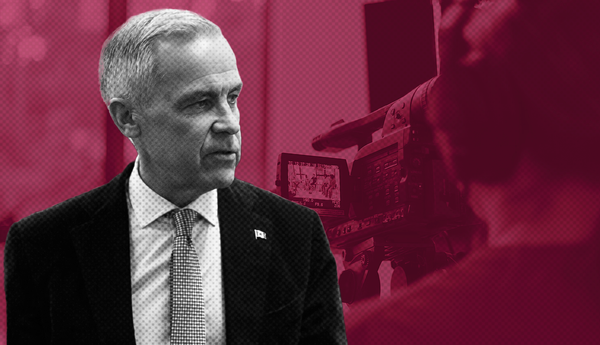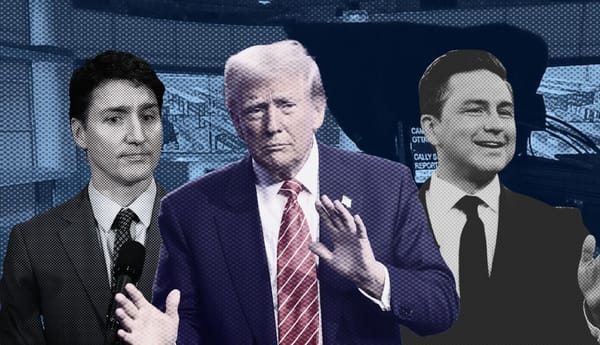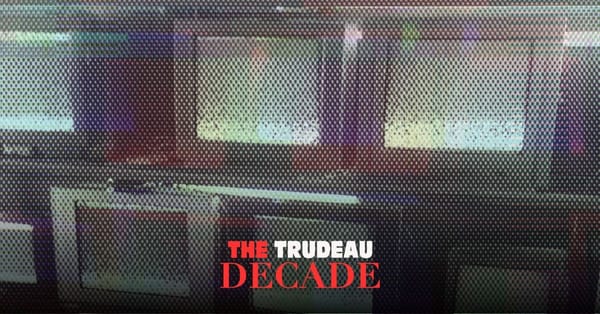When it comes to media outlets, the more transparency offered about funding the better. At Passage, for example, we make it clear that we’re 100 per cent reader funded, and release annual transparency reports disclosing our revenue and costs. Yet not every publication is going to take this approach, and so it’s important that other forces help ensure readers know who is funding these outlets wherever possible.
With this in mind, I support in theory the general idea of Twitter labeling what they call “state-affiliated media” outlets as such: It helps give readers unfamiliar with an outlet a little bit of extra context, which can lead to a more critical audience. However, Twitter’s program is deeply flawed in practice, probably by intent rather than error.
Scope
When the program was launched in August 2020, it included accounts in just the five permanent United Nations Security Council member countries: China, France, Russia, the United Kingdom and the United States.
In February, it was expanded to “Group of Seven (G7) countries, and to a majority of countries that Twitter has attributed state-linked information operations to,” which are: Canada, Cuba, Ecuador, Egypt, Germany, Honduras, Indonesia, Iran, Italy, Japan, Saudi Arabia, Serbia, Spain, Thailand, Turkey, and the United Arab Emirates.
This rollout has occurred slowly, with Iranian PressTV, for example, being labelled “state-affiliated media” just last week. This means the current list of state-affiliated media likely isn’t complete as of yet.
Twitter has promised that the policy “will be expanded to include additional countries in the future,” as it should. There’s no justifiable reason to limit the program to a select group of countries in the world.
Transparency
Twitter has made their definition of “state-affiliated media” public: “State-affiliated media is defined as outlets where the state exercises control over editorial content through financial resources, direct or indirect political pressures, and/or control over production and distribution.”
They note that, “As part of the development of this process, we consulted with a number of expert groups, including members of the Digital and Human Rights Advisory group in Twitter’s Trust & Safety Council.” Twitter lists said members publicly on their site, although there’s no available information on who else makes up the “number of expert groups,” which is a problem.
More importantly, they don’t make public what evidence they’ve used to designate certain media outlets as state-affiliated. If you go to RT’s Twitter account, for example, the hyperlink on the “Russia state-affiliated media” label takes you to a page explaining the general program, but not why RT is there.
The labelling of accounts as state-affiliated has consequences, including that, “Twitter will not recommend or amplify accounts or their Tweets with these labels to people.”
Journalists working at these media entities, as well as the general public, deserve to know exactly why and how they were included, with hyperlinks on their account’s label taking you to a page explaining that.
These are editorial decisions, after all, and we deserve transparency from Twitter, just as we do from the media outlets themselves. This is especially true because some of these classifications have been disputed by the outlets, with no explanation given by Twitter.
Selection
Transparency about the listing process would also be incredibly valuable because the current list of “state-affiliated media” is confusing.
It’s not surprising that some media outlets are included. For example, upon learning of the recent designation, Ahmad Noroozi, PressTV’s deputy CEO, tweeted, “We never wanted to conceal our affiliation with Iran’s state, cause it’s an honor & source of power. TV networks such as BBC are heavily funded by their states but never receive the same treatment.”
As Noroozi notes, Twitter has failed to label any Western media outlets, or those in countries friendly to the West, as state affiliated, except one (more on it later), to the best of my knowledge. This ranges from public broadcasters, such as CBC, BBC and PBS, to outlets founded explicitly for government propaganda purposes, such as Radio Free Europe/Radio Liberty.
In fact, Twitter goes out of its way to make exemptions for these outlets, stating, “State-financed media organizations with editorial independence, like the BBC in the UK or NPR in the US for example, will not be labeled.”
As a reminder, Twitter claims that any any of the three following attributes is enough for an outlet to be labelled as state affiliated: state funding; state control over distribution and production; direct or indirect political pressures.
As such, all of the aforementioned outlets should be included by virtue of their reliance on state funding alone. The idea that the CBC, for example, received $1.2 billion in government funding in 2019/20, and yet retained absolute editorial independence, is hard to believe.
Violations of editorial independence don’t have to be as explicit as someone from the government directly telling a media higher up what to publish. Again, CBC is a great example.
Their funding can, and has been, cut by governments, which means people pushed out of jobs and sometimes careers. Governments aren’t above cutting resources to media outlets if they’re too critical. As such, it’s difficult to believe that this threat has never acted as indirect political pressure on people at CBC, which ended up impacting editorial content. (Journalists often admit to this pressure, in fact, just never that they succumb to it.)
Moreover, some upper leadership at the CBC are appointed by the Prime Minister’s Office (PMO), which is obviously a form of government involvement. But don’t take it from me, listen instead to what the Canadian Media Guild (CMG) had to say in 2014: “CBC Board and president are appointed by PMO. All indications are that these are highly partisan appointments – How else to explain that virtually all current board members are Conservative party donors or activists, and happen to have all been appointed by Conservative Prime Minister Stephen Harper?”
They add, “Clearly, this approach to the governance of CBC/Radio-Canada is deeply flawed, lacks transparency, and results in a board that is not strong, diverse or accountable to Canadians (the true shareholders of CBC/Radio-Canada).”
Later in that release, the CMG also points out another form of political interference: “In 2013, the Conservative government through omnibus Budget Bill C-60, Division 17 introduced political interference at CBC/Radio-Canada, the largest news organization in the country, an unprecedented measure in democratic countries. The new powers allow the government to be at the bargaining table when CBC/Radio-Canada and its employees’ unions are discussing what constitutes news, news programming, how assignments are made and the role of producers. This is another wrong-headed decision made in haste with no proper consultation. It’s also a clear attack on the independence of the CBC.”
The CMG called on federal political parties to repeal Division 17, arguing it’s “in the interest of our country and of our reputation as a mature democracy – to remove government’s interference in CBC’s day-to-day operations.”
With all of this in mind, outlets such as the CBC can’t be considered to be completely editorially independent, and as such deserve the state-affiliated label.
New Label
Leaving outlets like the CBC and BBC without any labels is misleading, as it gives the impression that they have no connection with the governments of their respective countries.
Moreover, giving these outlets the state-affiliated label doesn’t imply they function in the exact same way as those already listed by Twitter, such as RT, CGTN, Sputnik and others based in Official Enemy states. I’m not arguing the BBC and PressTV are identical things in different countries, for example, just that they’re both state-affiliated and should be labeled that way.
However, I suspect — based on the vitriolic response I received to this argument when I made it on Twitter, including from many supposed leftists — that most will have an issue with daring to suggest Western media can be, and is, influenced by the state. In short, I can’t see Twitter ever adding the label to media outlets in U.S. allied countries.
(The only exception thus far is its September 2020 decision to label Ruptures, an independent French outlet, as Russian-affiliated media, shortly after they published a report critical of media coverage of “Russiagate.” The label has stayed up since, with no public justification given by Twitter, even after being disputed by the outlet. If publishing something that happens to defend a government is grounds for being labeled affiliated with it, all U.S. outlets should get that label.)
As such, another solution to this issue is for Twitter to change its label from “state-affiliated” to “state-funded.” This is a neutral descriptor of an outlet’s relationship to the state, and does not rely upon editorializing to implement. It’s also based on indisputable facts, provides just as much transparency to readers and lessens Twitter’s subservience to Western state objectives.
It also helps to achieve a more critical audience. Editorial interference can take subtle forms, and readers should become aware of those too, not just the more explicit examples.
So, for a better understanding of how media functions, Twitter should either apply the state-affiliated media label fairly, or scrap it and replace it with state-funded, and then roll it out to all outlets in the world that meet that qualification.
Even the CBC.







